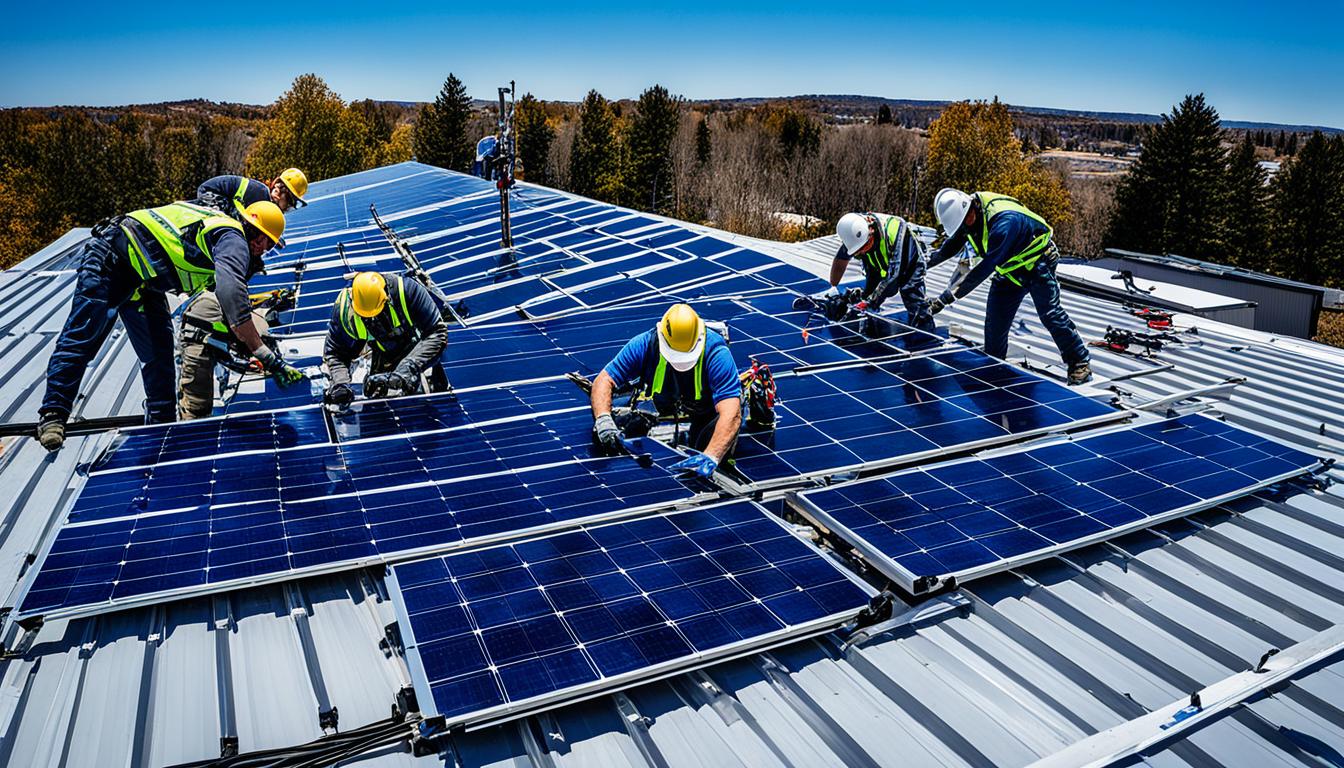
Solar Panels and Installation Costs: What To Expect

Isabella Ingram
Posted 9/16/2023
Imagine a world where your electricity bill becomes a thing of the past. Where clean, renewable energy powers your home, providing a sustainable future for generations to come. It's not just a dream; it's a reality that more and more homeowners are embracing through the installation of solar panels.
Solar panels have revolutionized the way we think about energy consumption, offering an environmentally-friendly solution that can save you money in the long run. But before you take the leap into solar power, it's essential to understand what to expect when it comes to costs and installation.
In this article, we will guide you through the process, providing valuable insights into average solar panel costs and the installation journey. Whether you're motivated by financial savings or a commitment to reducing your carbon footprint, we're here to help you make an informed decision that aligns with your goals and values.
So, let's dive in and explore the world of solar panels and installation costs, where cleaner and greener energy awaits.
Understanding Average Solar Panel Costs
When considering a switch to solar power, one of the key factors that homeowners need to understand is the average costs associated with solar panels and their installation. By gaining insights into these costs, individuals can make informed decisions about their solar investment and plan their budget accordingly.
The average cost of solar panels can vary based on several factors. One important consideration is the size of the system. Larger systems tend to have higher upfront costs but can generate more electricity, leading to greater long-term savings. Additionally, the brand of solar panels chosen can also impact the overall cost, as some brands may be more expensive due to their reputation for high-quality and efficient performance.
Furthermore, the inclusion of additional features or equipment, such as battery storage or monitoring systems, can also contribute to the overall cost. These features provide homeowners with added benefits and convenience, but it's important to consider their impact on the budget.
By understanding the different factors that influence solar panel costs, homeowners can have a clearer idea of the range of prices they can expect. This knowledge empowers them to make informed decisions that align with their financial goals and energy needs.
Factors Influencing Solar Panel Costs
| Factor | Description |
|---|---|
| System Size | The physical dimensions and capacity of the solar panel system. |
| Brand | The manufacturer and reputation of the solar panels. |
| Additional Features | Optional components, such as battery storage or monitoring systems. |
By considering these factors, homeowners can get a better understanding of the average solar panel costs and make informed decisions about their solar energy investment. The next section will delve into the installation process, shedding light on what homeowners can expect when they decide to go solar.
The Installation Process Unveiled
When it comes to installing solar panels, understanding the process is key. In this section, we'll take a closer look at each step involved in the installation process, giving you a better understanding of what to expect.
1. Site Assessment
Before the installation begins, a thorough assessment of your property will be conducted. This includes evaluating the available space, sun exposure, and any potential obstacles that may affect the performance of your solar panels. By carefully assessing the site, the installation team can determine the most suitable location for placing the panels.
2. Permitting
Prior to installing solar panels, various permits and approvals are required. This typically involves obtaining permits from your local government or homeowners association. The installation company will handle the paperwork and ensure that all necessary permits are obtained before proceeding with the installation process. This step ensures compliance with local regulations and codes.
3. Equipment Installation
Once the site assessment is complete and the necessary permits are obtained, the installation team will proceed with installing the solar panels. This includes mounting the panels onto your roof or any other suitable location determined during the site assessment. In addition, wiring and electrical connections will be made to integrate the panels with your home's electrical system.
Throughout the installation process, the team will take all necessary precautions to ensure a safe and efficient installation. They will follow best practices to minimize any potential disruptions to your property and complete the installation in a timely manner.
By understanding the installation process, you can have peace of mind knowing what to expect when transitioning to solar energy. The installation team will guide you through each step, ensuring a smooth and successful installation.
Conclusion
Considering solar panels and the installation process can have significant benefits for homeowners in the United States. By investing in solar power, homeowners can not only reduce their reliance on traditional energy sources but also contribute to a cleaner and more sustainable future.
The key to making an informed solar investment lies in understanding the costs involved. As discussed, solar panel costs can vary depending on factors such as the size of the system, the brand chosen, and any additional features desired. By exploring the average costs and considering the long-term savings potential, homeowners can make a well-informed decision that aligns with their financial goals.
Moreover, understanding the installation process provides homeowners with a clear picture of what to expect. From site assessment to equipment installation, a smooth and efficient installation is crucial for optimal solar panel performance. By working with trusted professionals, homeowners can ensure a hassle-free installation and start reaping the benefits of solar power sooner.
In the end, solar panels offer an opportunity to save money, reduce carbon emissions, and become more energy independent. With the advancement of technology and the increasing affordability of solar systems, there has never been a better time to embrace solar power. By taking the first step towards solar panel installation, homeowners can make a positive impact on both their wallets and the environment.